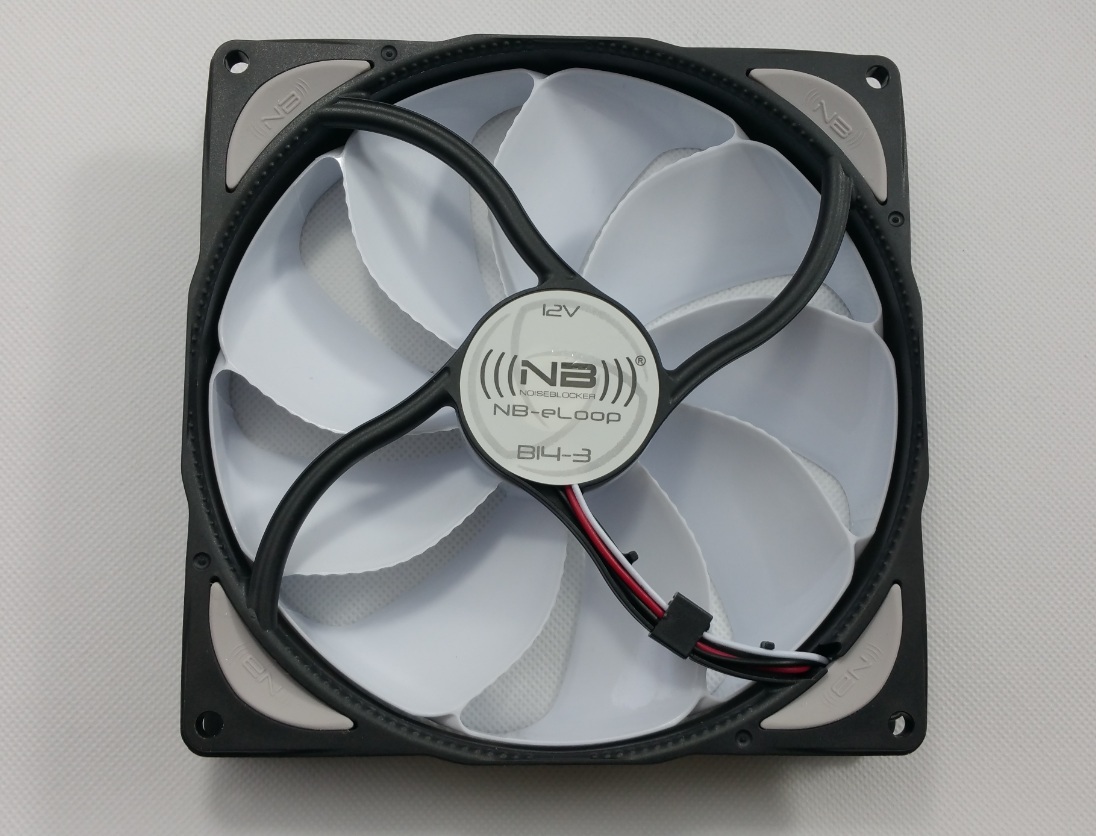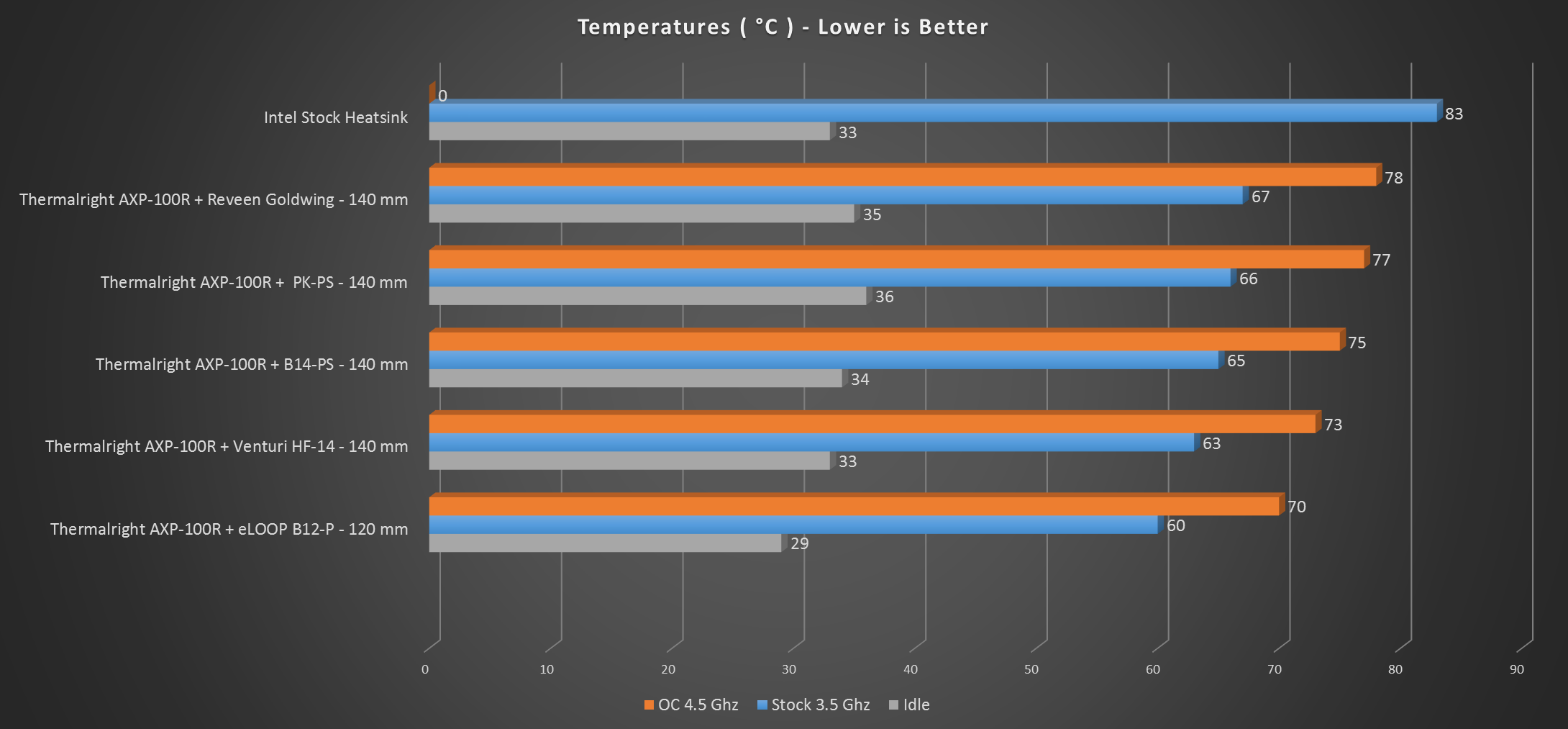
Entering the new year with more reviews, this time the new series from Noiseblocker, their 140 mm new eLOOP fans.
We loved this series in the 120 mm form in the past, so let’s see how the big brothers perform.
Noiseblocker
(((Noiseblocker))) is a trademark of the Blacknoise group.
Blacknoise Deutschland GmbH is focused on the development and production of high-quality product solutions in computer Hardware, multimedia accessories and they also produce industrial grade fans.
Founded in 1998, they are the European leader in the low-noise PC arena - particularly through their Noiseblocker brand - and have become a mature, economically stable company.
Thus, they have branches worldwide in over 33 countries.
Their success is based on innovative product development, quality assurance and not only their global reach, but their ability to think flexibly and are very proud of their products, patented technologies and testing methodology like low-noise development, Low-dB-measuring chamber, fast prototyping, CAD construction, fan-characteristic curve-testing bench-measurement and acoustic-camera-visualization engineered at the limits of audibility.
Prices when reviewed:
B14-1: £ 22.51 - via Amazon.co.uk
Noiseblocker ITR-B14-1 - NB-eLoop Fan B14-1 - 140mm![]()
B14-2: £ 20.44 - via Amazon.co.uk
Noiseblocker ITR-B14-2 - NB-eLoop Fan B14-2 - 140mm![]()
B14-3: £ 24.99 - via Amazon.co.uk
Noiseblocker ITR-B14-3 - NB-eLoop Fan B14-3 - 140mm![]()
B14-PS: £ 20.08 - via Amazon.co.uk
Noiseblocker ITR-B14-PS - NB-eLoop Fan B14-PS - 140mm PWM![]()
Complete Specifications:
As we are used by now from Noiseblocker which offer a great amount of technical detail with very precise numbers.
All the technologies and patents.
- 100% developed in Germany
- TÜV-certified sound level specifications = real data
- Extremely low-noise bionic loop rotor
- Bionic deep sound fan frame
- Position-invariant magnetic bearing NB-NanoSLI® 2 NEW!
- Silent NB-EKA P2 Drive NEW!
- Bayer® Makrolon® rotor with anti-dust technology
- Weighted reinforced fibreglass PBT frame
- NB cable management with two pluggable connection cables
- Perfect results for PC casing, CPU cooling systems and radiator( higher cooling power at same revolution rates)
A very interesting aspect is that they were developed with the help of Dr. Rudolf Bannasch - an expert in the field of applied bionics research and conversion of innovative concepts from the bionics to technical procedures and products.
Visual Inspection
They used the same design for the box as seen in the 120 mm eLOOPs which looks very professional and the white background makes for an excellent eye catcher of the products illustrated.
Inside, we have the following:
- 4x fine thread screws
- 4x knurled nuts
- 8x silicon inner grommets
- 1x 20 cm connection cable with textile sheath/sleeving
- 1x 50 cm connection cable with textile sheath/sleeving
Moving onto the main attraction, the fans.
They are pretty much identical in terms of design from the 120 mm ones with trademarks like the continuous blade design, antivibration removable outer frame pads and to reduce turbulence the blades have a wave pattern combined with interrupted pattern dots on the frame itself.
Now the only physical differences we found between the 120 and 140 mm are size (of course) and the fact that they are a little thicker - important aspect for those with tight tolerances.
29 mm tall (140 mm eLOOP) vs 25 mm tall (120 mm eLOOP)
How we tested
- Sound meter - Pyle PSPL01 - positioned 1 meter from the case, (we will include +/- 2-3 % margin for error) with ambient noise level of 25-30 dB/A.
- RPM control and monitoring via MSI Control center, tested at 4 different stages 20, 50, 80 and 100 % RPM load (only for the PWM one). Plus a secondary system to test the rpm curve via a fan controller from Reeven - Polariz.
- We removed the video card plus our PSU has semifanless action so that we removed virtually any other sources of sound, to leave only the Noiseblocker fans running for optimal testing.
- Regarding airflow we used an anemometer - Mastech MS6252A (we will include +/- 6-11 % margin for error) - positioned 15 cm away from the fan and in between we use an improved cardboard tubing also in diameter of 140 mm to channel all the airflow as straight as possible. The results were recorded in CFM.
- The PWM model was tested in a gaming session of 20 minutes in Withcer 3 at stock CPU settings and then OC to 4.5 GHZ.
- The rest of the hardware:
Processor: Intel i7 2700k
CPU heatsink: Thermalright AXP-100R
Case: Fractal Design Core 1000 mATX
Storage: Samsung 840 Pro 128 GB (no HDDs, again to remove extra all noise)
Motherboard: MSI B75IA-E33 mITX
PSU: Silverstone SX-600G SFX w/ semifanless function
- Other fans for the CPU test:
- Reveen Goldwing 140 mm - 300 - 1700 RPM - < 92 CFM - < 36 dB/A - < 2.200 mmH2O
- Venturi HF-140 mm PWM - 400 -1500 RPM - < 78 CFM - < 30 dB/A - < 1.940 mmH2O
- Noiseblocker PK-PS 140 mm PWM - 400 -1500 RPM - < 71 CFM - < 29 dB/A - < 1.320 mmH2O
- Noiseblocker eLOOP B12-P - 800 - 2000 RPM - < 78 CFM - < 28 dB/A - < 2.204 mmH2O
The results.
First the CFM and noise outputs.
All within published specs, accounting to the mentioned recording %.
So all is good so far, all of them are dead silent besides the B14-3 that can be heard at full chat.
Now moving to the CPU temperature and static pressure test:
* 0 degrees means that a product has failed to keep the temperatures safe and the CPU went into thermal throttling.
The numbers speak for themselves, still the eLOOP design is very good even at in increased size, where we have lower static pressure but increased CFM with reduced rpm and overall noise output.
05.04.2017 Update.
Like in our previous review with the B12-PS where we updated the results when we used them in a custom WC project, now the time as come to use the B14s in another environment and see what benefits they would bring or not.
Hence no need to do a separate review just for only one testing when here they are perfectly presented. This time we employed 6x Noiseblocker Eloop B14-PS in our new testing rig, which is as follows:
Processor: Intel i7 3930k @ OC’ed to 4.5 Ghz - 1.380v
Cooling CPU: NZXT X62 Kraken 240 AIO
Case: Phanteks Enthoo Pro M Acrylic
Motherboard: ASUS ROG Rampage IV Formula X79 ATX
RAM: 16GB (4×4) G.Skill Trident X DDR3 2400 Mhz
GPU: MSI GTX 780 LIGHTNING
SSD: Samsung 850 Evo 250 GB
PSU: Corsair TX850 V2
Software:
- Windows 10 Pro x64 Build 1607
- NZXT CAM v3.3.0
- NVIDIA GeForce WHQL 382.33
- Core Temp v1.7 R6
- CPU-Z v1.71 ASUS ROG Skin
- Intel Burn Test v2.54
Then here they are, ready to be installed:
So, this is the plan:
2x Will go on the NZXT Kraken - to complete the cooling in a push pull configuration
1x As a case exhaust on the read
3x As exhaust on the top side
Thus 2x B14s will be controlled by the Kraken and the rest will be by the new fan controller.
But as we will see we didn’t have space for the 6th fan on the top bracket - apparently it supports triple 280 slot rads but not 3x 140 mm fans by them selves mounted. Thus we ditched one.
Then we found out that the motherboard has so many PWM fan headers that the fan controller was redundant so we canceled that as well for a more cleaner outcome.
Let’s install !
The back exhaust goes in first.
Then the supposedly next 3 fans on the top tray but only 2 will fit.
Like so.
And finally 2 more on the NZXT Kraken X62 AIO to complete the build. (An in-depth build vlog will soon be available)
Now let’s test them out !
Everything is set to auto fan curve to achieve a real life usage. No body will keep the fans at full chat if they want to keep some sanity for their nerves. The “Silent” profile is set on the NZXT CAM user interface software.
So to conclude this update:
+ We saw great temperature improvements to our overclocked hexa core beast of a CPU by by ~11 % but at a cost of a total system noise of 15 %. But in the decibels world, anything in load under 40 is considered really good. Again we have a total of 7 fans in the case now ! So it is really good.
+ Great upgrade to the aesthetics - of course a subjective matter but if it was a pure black and white build then you can imagine the visual eye candy.
As for a minor con:
- Double check your case’s clearances because these fans are wider than regular fans - 29 mm vs 25.
Conclusion
Again perfect scores because the eLOOP series is one hell of fan series with super design and overall quality and performance.
The good:
+ Extremely high built quality
+ Excellent performance all across the range model
+ Superb antivibration and low turbulence systems
+ One of the best blade designs out there.
+ High quality long and sleeved removable cables
+ Very quiet and sturdy
+ Their presentation is very professional and rich with exact technical details
The bad:
- Not much to say beside the price at over 20 quid a pop
- Maybe that the high rpm model the B14-3 can be heard at full chat.
Let’s move to our score and award:






















Man!
I own an AXP-140 (close to the AXP-100) and was wondering if a B14-PS would outperform the B12-P actually installed.
Thanks to you I have my answer : no, sadly.
Shame cause I find it damn sexy in 140mm, but the lack of static pressure does not fit a radiator.
Again, thanks and farewell !
Glad to be of help. Oh yes they are sexy 😉 Thank you as well. All the best, Alex